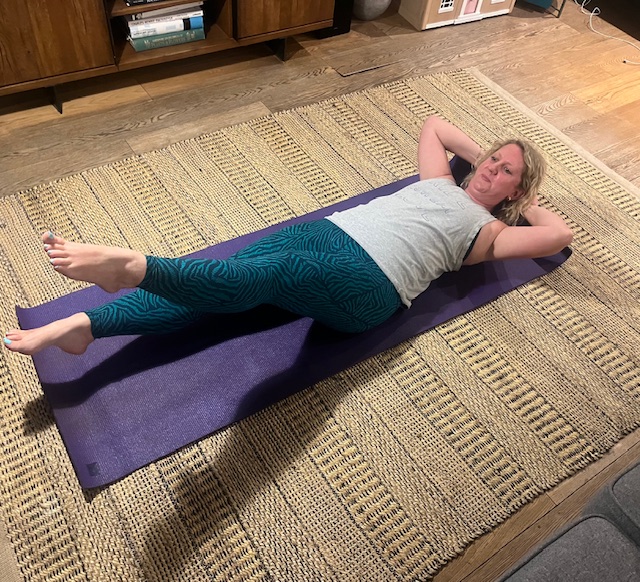
I have quite a strong set of core muscles thanks to regular Pilates and strength work. However, one exercise that I have always struggled with is flutter kicks.
It’s a more advanced move, requiring a significant amount of effort from your lower abdominal muscles.
“Flutter kicks strengthen the core muscles, particularly the lower abs, improve hip flexor strength, and enhance overall stability and endurance,” says personal trainer and sports therapist Lauren Chiren.
“They're excellent for developing lower-back stability and can contribute to better posture."
I'm always up for a challenge, so I decided to spend 30 days doing flutter kicks, in an attempt to master the exercise and get an even stronger core.
How to do flutter kicks
Doing flutter kicks is basically like swimming on your back but without the water! All you need is a mat.
Sets: 2-4 Time: 10-40 seconds
Start your week with achievable workout ideas, health tips and wellbeing advice in your inbox.
- Lie on your back and lift your head and shoulders off the mat. Keep your mid and lower back in contact with the floor.
- At the same time, lift your feet and legs off the floor.
- If you’re a beginner or need a little bit of support to hold this position, then place your hands underneath your bum. Otherwise, your hands can go by your sides or behind your head.
- Keeping both legs completely straight, lift one upwards while lowering the other towards the ground and then quickly alternate the legs.
- Keep alternating in a smooth movement. Rest for 30-60 seconds between sets.
Trainer tips
Start by making the kicks quite large, with more distance between the feet. As you get better at the exercise, make the flutters smaller, lower to the ground, and slower.
Fitness Expert Chloe Bennet recommends stopping if you feel any pain.
“It’s important to concentrate on keeping your form correct instead of trying to complete a specific duration of exercise,” she says.
“Performing shorter workouts with good form takes precedence over longer sessions with incorrect technique.”
You also shouldn't perform flutter kicks every day. Take one or two rest days in between to allow your muscles to recover.
“Muscles require rest periods when you focus on control and stability exercises,” says Bennet.
“The key factor is maintaining regular practice instead of daily exercises.”
With this in mind, I decided to practice the move every other day for a month.

Week one
For the first two days, I really struggled, managing 10-15 seconds of flutter kicks at a time.
But by the end of the week, I was able to build up to three sets of 20 seconds with my hands supporting my back.
I could feel the workouts in my lower abs and also my hips, which can get very tight from sitting down when working.
Week two
My aim this week was to do flutter kicks every other day, for 20-25 seconds per set.
While my abs did feel a bit tired from the first week of flutter kicks, they also felt stronger.
I was able to do them with less difficulty than week one, and my hips also felt looser.
Week three
In order to progress, I decided to up my workouts to four sets of 30 second intervals— again, every other day.
This felt hard, but by concentrating on my breathing, I was strong enough to get through the sets every day I did them.
I was also able to lower my legs closer to the ground, which intensified the burn in my lower abs.
Everything felt improved from the previous week, including my form, flexibility, and strength.
Week four
My core was feeling a lot stronger going into the final week of the challenge, and my lower abs and quads felt pretty sturdy too!
To challenge myself, I tried doing 40-seconds of flutter kicks. I did three sets with 60 seconds rest in between, still on alternate days.
I was able to lift my head and shoulders a little higher and move my legs even closer to the ground.
The trunk of my body did feel a bit sore in parts after a month of doing so many flutter kicks, but the improvement in strength and flexibility in those areas is great.
It’s made me realise that these are definitely exercises I need to keep doing as part of my routine. I might even add some ankle weights to really feel the burn!

Kat Storr is a freelance digital journalist with a background in news. She started her career by working at Sky News and has since written for several publications, including Stylist, Metro, HuffPost UK and more. She often covers health and wellbeing topics and written about postnatal mental and physical health, how to exercise when you're hypermobile and tips for coping with sleep deprivation.
You must confirm your public display name before commenting
Please logout and then login again, you will then be prompted to enter your display name.
